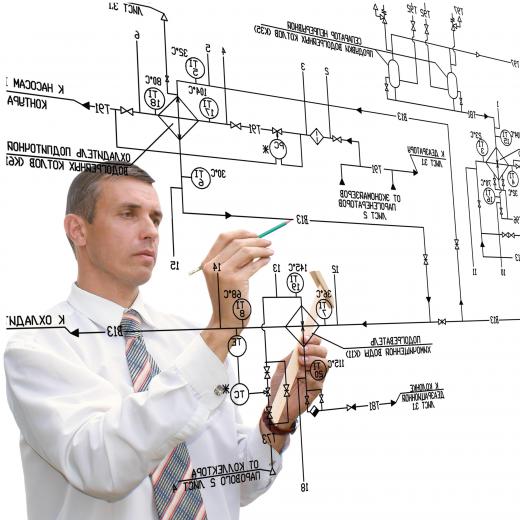Wiring diagrams are one way to visually represent electrical circuits and typically make use of simplified drawings to stand in for each component. Most wiring diagrams are arranged to give a general idea of where each component is located in the actual device as well as the physical connections between them. This makes a wiring diagram useful in either constructing or repairing a device. A similar concept is the schematic diagram, which typically shows the electrical connections but does not bear any resemblance to the unit it represents. Another variant is the pictorial diagram, which typically shows the construction of the device itself instead of a simplified representation.
The purpose of a wiring diagram can be to assist in either the construction or repair of an electronic device. Each electronic component is represented by a simplified shape, which may resemble the part or give a visual clue to its design. Resistors are often represented as a jagged line to show they impede the flow of electricity, while diodes are drawn as a triangle pointing at a line to show they only allow current to flow in one direction. The components may also be labeled to indicate any value or tolerance associated with them. They are also typically joined together by lines to represent physical wiring or connections on a printed circuit board (PCB).

Wiring diagrams are useful in a variety of different applications, such as architectural designs and automotive repair. These are both applications that require knowledge of the physical location of the components, such as light switches or outlets in a building, or motors and solenoids in an automobile. A wiring diagram may even show the color of the wires involved, which can assist in doing repairs.

In some instances, wiring diagrams can be used for applications that do not involve electricity. A vacuum wiring diagram is often used in automobiles, particularly older models, to show how each component is hooked to the system. This type of wiring diagram involves vacuum instead of electricity, though the visual representation of the system is very similar.

Schematic and pictorial diagrams can offer similar information, though on different ends of the spectrum. Instead of showing where components are organized in space, schematic diagrams tend to abstract the concept of the circuit into a highly organized representation. This can make it difficult to locate components in relation to each other, though it can also help in diagnosing problems in the circuit. The other extreme is pictorial diagrams, which typically consist of labeled picture or accurate drawings of the components instead of simplified shapes.
